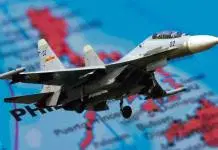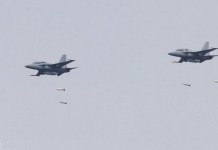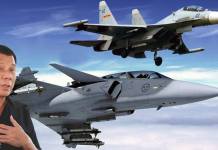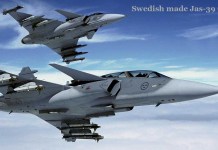
Defense expert believes that a Russian Sukhoi SU-30SME export variant could be the best fighter jet for the Philippines to acquire.
According to a Military defense expert at the Moscow-based Centre for Analysis of Strategies and Technologies (CAST). The Philippines should seriously be more focused when purchasing military equipment and weaponry, specifically in acquiring a Philippine Air Force (PAF) fighter aircraft that can simultaneously perform multiple role missions.
CAST explained why SU-30SME Sukhoi ‘Flanker’ fighter jets is the best fighter aircraft for the Philippines.
According to the Defense Expert, the Philippines is an archipelago which means that it is suitable to operate within its territorial boundaries because the Su-30SME is capable of performing a 4.5-hour flight combat mission with a range of 3,500 km, an exceptionally long range, and large payload as it considered a 4+ generation jet fighter.
The plane is a twin-engine, two-seat super maneuverable fighter aircraft developed by Russia’s Sukhoi Aviation Corporation. Capable of all-weather, air-to-air and air-to-surface deep interdiction, as well as electronic counter-countermeasures and early warning missions. While the PAF can also use the Su-30SME to function as a command-and-control platform guiding a group of combat planes.
The aircraft is also equipped with a flight refueling probe and refueling system, with a normal fuel reserve of 5,270 kg, An aerial refueling system increases the range to 5,200 km (3,200 mi) or flight duration up to 10 hours at cruise altitudes.
The Su-30SME is powered by two AL-31FP afterburner jet engines with thrust vectoring control. The engines generate a total afterburning thrust of 25,000 kg and afford the fighter a combat payload of up to 8,000 kg mounted from its 12 hardpoints.
It has a normal take-off weight of 26,090 kg, a maximum take-off weight of 34,000 kg, a speed of Mach 2 in level flight and normal/maximum fuel weights of 5,270/9,300 kg respectively.
The avionics suite of the Su-30SME has been upgraded and the aircraft equipped with infrared and laser targeting pods for ground target acquisition and engagement. The new fire control radar can acquire and track 15 aerial targets simultaneously while being able to attack four at once. Other features include an integrated electro-optical targeting sensor coupled with a laser inertial navigation system, a helmet-mounted target designator, and satellite navigation system compatible with the GLONASS and NAVSTAR formats.
In the event, of a dogfight, experts believe that in a visual range dogfight, the Su-30SME is even superior to the US fifth-generation F-22, because the plane can perform some very advanced acrobatic maneuvers using a digital fly-by-wire system, wherein the pilot can maneuver a tailslide move and the Pugachev’s Cobra - a move where the plane pitches up vertically more than 90 degrees before leveling out again.
These maneuvers quickly decelerate the aircraft, causing a pursuing fighter to overshoot, as well as breaking a Doppler radar-lock, as the relative speed of the aircraft drops below the threshold where the signal registers to the radar. these features could give the SU-30SME an edge over comparable Western types including the American F-16C Viper, European Typhoon, Swedish Gripen, and F-35 stealth fighter.
In an air-to-air mode, it is capable of carrying 12 missiles, usually a combination of R-77, R-27, and R-73. as it can also be equipped with an Indian made BrahMos cruise missiles.
Defense expert believes that the Su-30SME’s sophisticated avionics, range, and a diverse payload can make the Air Force immense capability, especially during complex air to air and air to ground operations that can form to be the backbone of the Philippine Air Force in the next two to three decades.. - Carl E.
Watch: Russian Sukhoi SU-30SME while performing acrobatic maneuvers.













